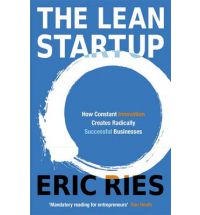The Lean Startup is about a scientific approach to managing startups/entrepreneurs.
It is recommended that anyone working in a startup stop whatever they are doing, and spent the next 24 hours to complete the book.
I will be summarizing some great concepts that I have learnt.
Introduction: Why We Fail
In traditional management, when you fail, there are only 2 possible explanations:
-
Fail to plan
-
Fail to execute
But what if you fail because your hypothesis is wrong in the first place?
An execution of a perfect plan, based on a flawed idea, would only fail.
The book focus on testing hypothesis and fine-tuning it, in a scientific way.
Build-Measure-Learn Cycle
There is usually an hypothesis to an idea, a feature, a marketing plan, a business model, or anything that the customer touches.
We always assume how customer will react.
Hence the need of this cycle/iteration:
- Build MVP (a Minimum Viable Product)
- Measure data
- Learn the goods and bads
.
Five Whys
Ask “Why” five times to understand the root of the problem.
Solve a problem in stages, with incremental improvements.
But there is curse of the 5 blames.. Remember, it’s not about blaming. It’s about improving the system process.
Two simplified rules:
-
Be tolerant on the first mistake
-
Never allow the same mistake to be made twice
Waste not
Building products that customers doesn’t want is a big waste.
In this 21st century, we now have supreme productive capacity and technology. We should change our question from
Can it be built?
to
Should it be built?
We would achieve much greater heights, if our economy is not wasteful.
Other Thoughts
Traditionally, definition of productivity is by functional excellence. Example, a programmer is expected to code all day.
That’s why programmers hate meetings. But to achieve validated learning, an individual must cross-function.
Have small, cross-functional team.
Optimization Vs Learning: Some of the features are merely optimization. It improves the product, but marginally. It is demoralizing when that happens.
In traditional management, when senior management don’t see results, they assume the team did not work hard enough, or not good enough. This is when personnel changes and musical chair is being played.
Organisation has Muscle Memory. It is not easy to change the habits of a company. You are up against a system and individuals’ changes. It’s tough to implement the methods, but it’s for the good.
What should you do?
After reading the book, I ask myself what should I do?
Hope you ask too, and come to the same conclusion as me - to validate the teachings of The Lean Startup.
Think of a minimum change you can introduced, change it, then measure and learn.
PS: If you enjoy, buy the book with my bookdepository affiliate link (:
